
Foot & Ankle Bones
Plantar warts Gout (a type of arthritis) Plantar fasciitis (heel pain) Stress fractures Diabetic foot ulcers Last medically reviewed on April 13, 2015 The foot is the lowermost point of the.

Diagram of The Foot 101 Diagrams
When to see a doctor Summary The foot is an intricate part of the body, consisting of 26 bones, 33 joints, 107 ligaments, and 19 muscles. Scientists group the bones of the foot into the.
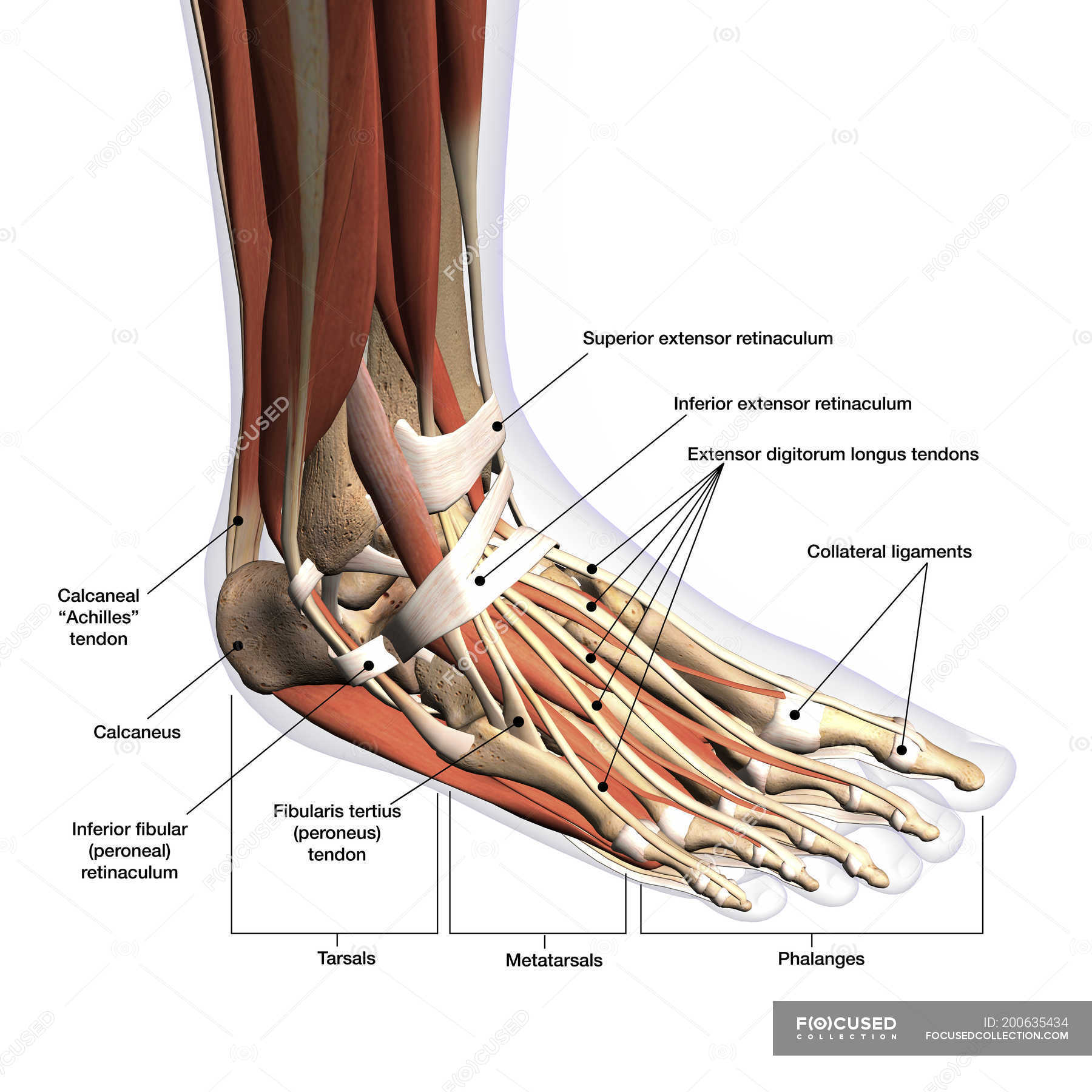
Anatomy of human foot with labels on white background — ankle, leg
Common causes of foot pain include plantar fasciitis, bunions, flat feet, heel spurs, mallet toe, metatarsalgia, claw toe, and Morton's neuroma. If your feet hurt, there are effective ways to ease the pain. Some conditions specific to the foot can cause pain, less movement, or instability. Verywell / Alexandra Gordon.
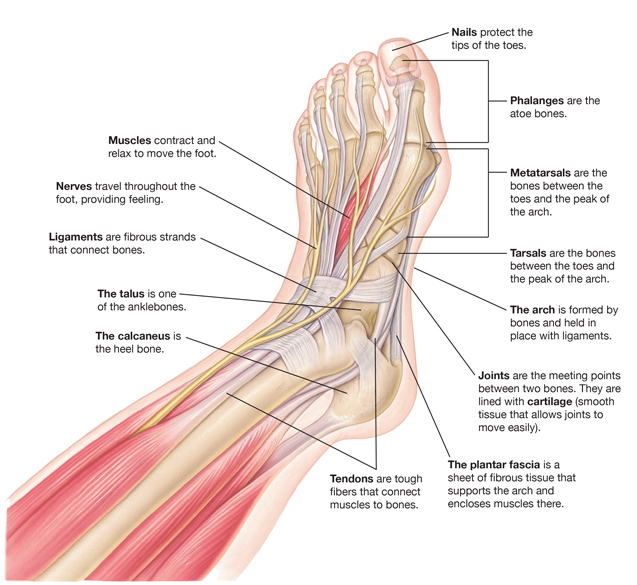
Parts of a Foot Saint Luke's Health System
These bones are arranged in two rows, proximal and distal. The bones in the proximal row form the hindfoot, while those in the distal row from the midfoot. Hindfoot. Talus. Calcaneus. The talus connects the foot to the rest of the leg and body through articulations with the tibia and fibula, the two long bones in the lower leg. Midfoot. Navicular.

Foot & Ankle Bones
The ankle joint The ankle is the joint between the lower leg and the foot. The ankle bone is composed of three bones: the tibia, the fibula, and the talus. The tibia and fibula are the bones of the lower leg, and the talus is the bone of the foot that sits on top of the ankle joint.
.jpg)
Foot Bone Diagram resource Imageshare
The muscles acting on the foot can be divided into two distinct groups; extrinsic and intrinsic muscles.. Extrinsic muscles arise from the anterior, posterior and lateral compartments of the leg. They are mainly responsible for actions such as eversion, inversion, plantarflexion and dorsiflexion of the foot. Intrinsic muscles are located within the foot and are responsible for the fine motor.

Anatomy of the Foot and Ankle OrthoPaedia
It is made up of over 100 moving parts - bones, muscles, tendons, and ligaments designed to allow the foot to balance the body's weight on just two legs and support such diverse actions as running, jumping, climbing, and walking. Because they are so complicated, human feet can be especially prone to injury.

Foot Anatomy 101 A Quick Lesson From a New Hampshire Podiatrist Nagy
Foot and ankle anatomy consists of 33 bones, 26 joints and over a hundred muscles, ligaments and tendons. This complex network of structures fit and work together to bear weight, allow movement and provide a stable base for us to stand and move on.

Foot Description, Drawings, Bones, & Facts Britannica
Anatomy Ankle and foot anatomy Videos Ankle and foot anatomy Author: Jana Vasković MD • Reviewer: Nicola McLaren MSc Last reviewed: November 03, 2023 Reading time: 12 minutes Recommended video: Ankle joint [15:51] Bones and ligaments that form the ankle joint. Ankle and foot (left lateral view)
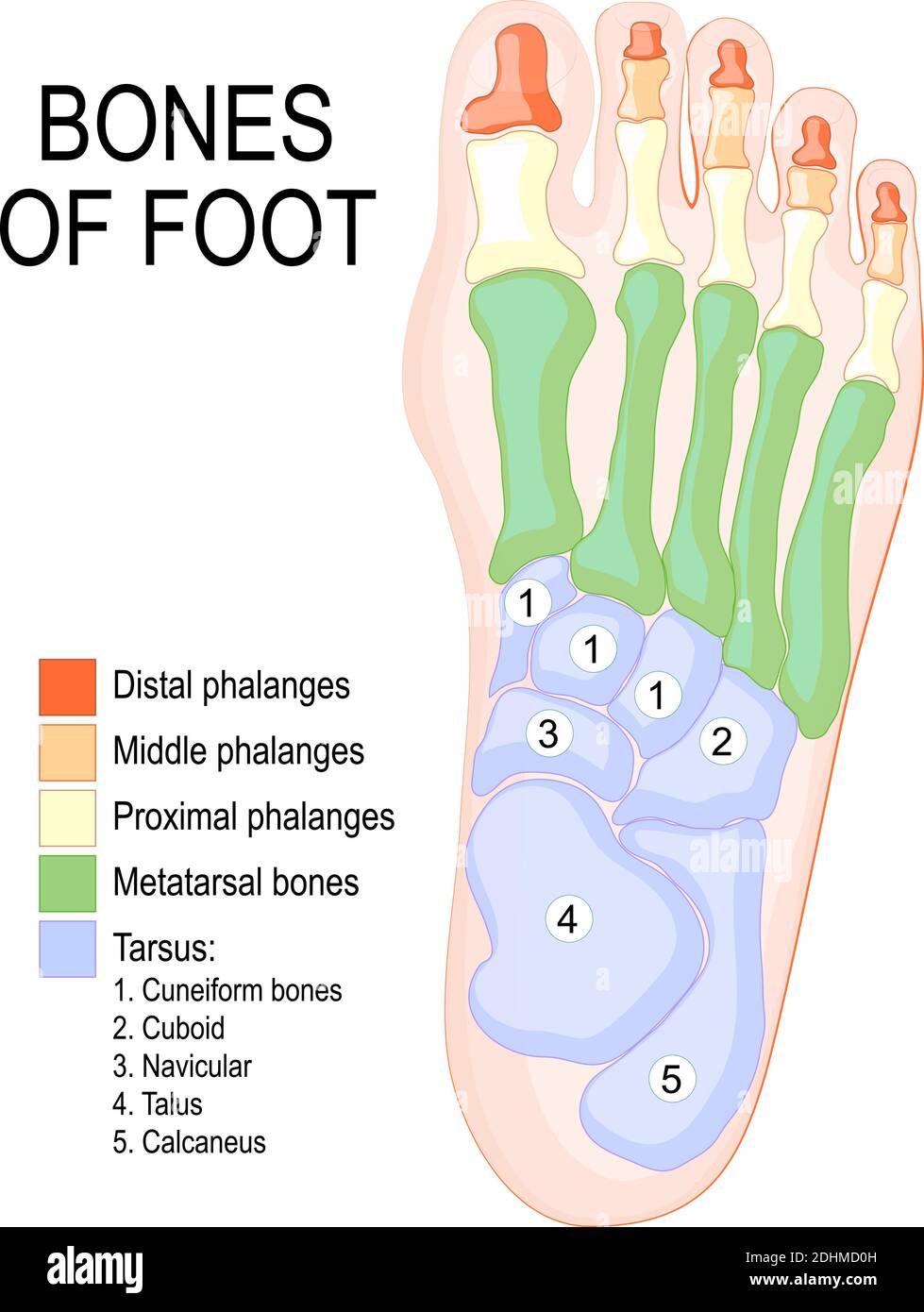
Human foot anatomy hires stock photography and images Alamy
The foot is the region of the body distal to the leg that is involved in weight bearing and locomotion. It consists of 28 bones, which can be divided functionally into three groups, referred to as the tarsus, metatarsus and phalanges. The foot is not only complicated in terms of the number and structure of bones, but also in terms of its joints.
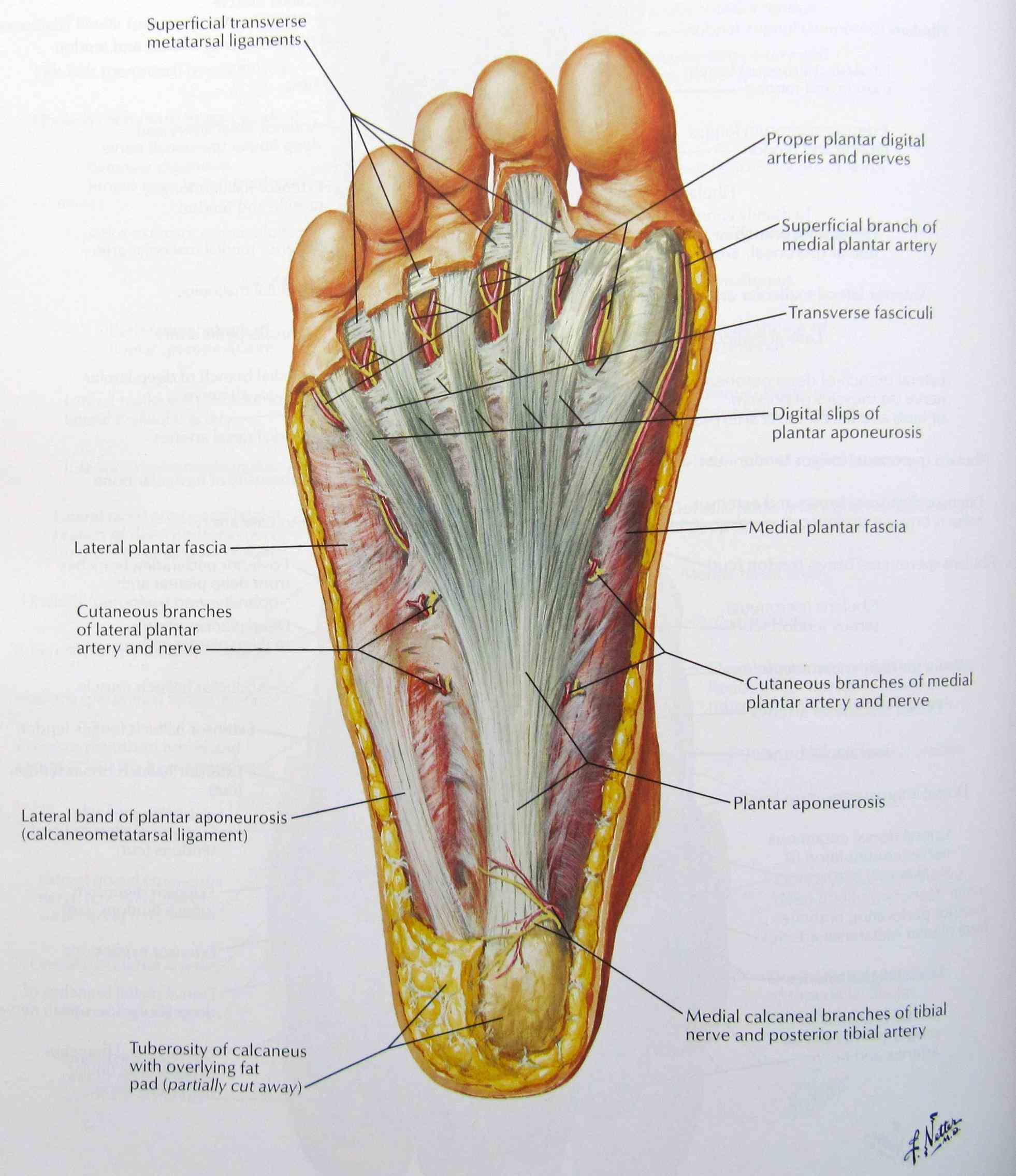
Anatomy The Bones Of The Foot
The anatomy of the foot The foot contains a lot of moving parts - 26 bones, 33 joints and over 100 ligaments. The foot is divided into three sections - the forefoot, the midfoot and the hindfoot. The forefoot This consists of five long bones (metatarsal bones) and five shorter bones that form the base of the toes (phalanges).
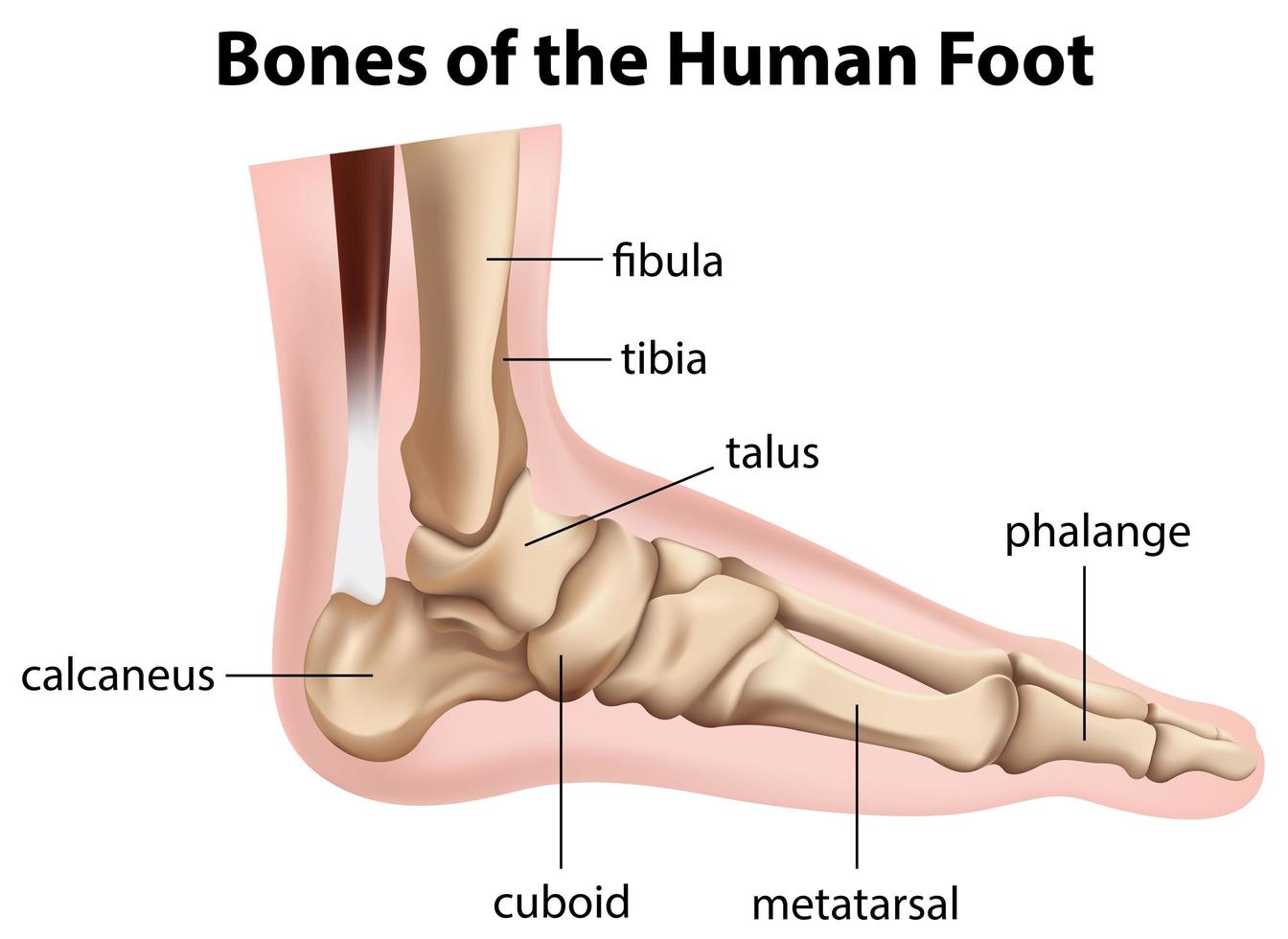
Bones of the human foot diagram 1142236 Vector Art at Vecteezy
There are a variety of anatomical structures that make up the anatomy of the foot and ankle (Figure 1) including bones, joints, ligaments, muscles, tendons, and nerves. These will be reviewed in the sections of this chapter. Figure 1: Bones of the Foot and Ankle Regions of the Foot

Chart of FOOT Dorsal view with parts name Vector image Stock Vector
The bones of the foot provide mechanical support for the soft tissues; helping the foot withstand the weight of the body whilst standing and in motion. They can be divided into three groups: Tarsals - a set of seven irregularly shaped bones. They are situated proximally in the foot in the ankle area. Metatarsals - connect the phalanges to.

Foot and Ankle Anatomical Chart Southern Biological
33 joints more than 100 muscles, tendons, and ligaments Bones of the foot The bones in the foot make up nearly 25% of the total bones in the body, and they help the foot withstand weight..
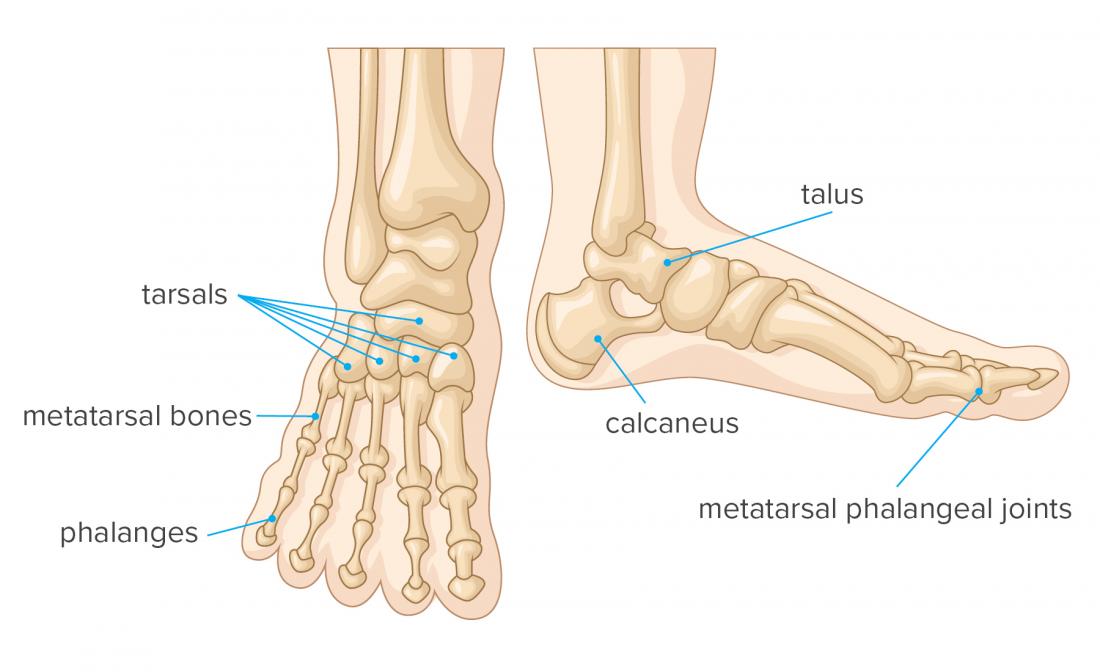
Foot bones Anatomy, conditions, and more
The foot is one of the most important interaction parts of the body with the ground, especially in the upright posture. During growth, the foot changes not only its dimensions but also its shape.
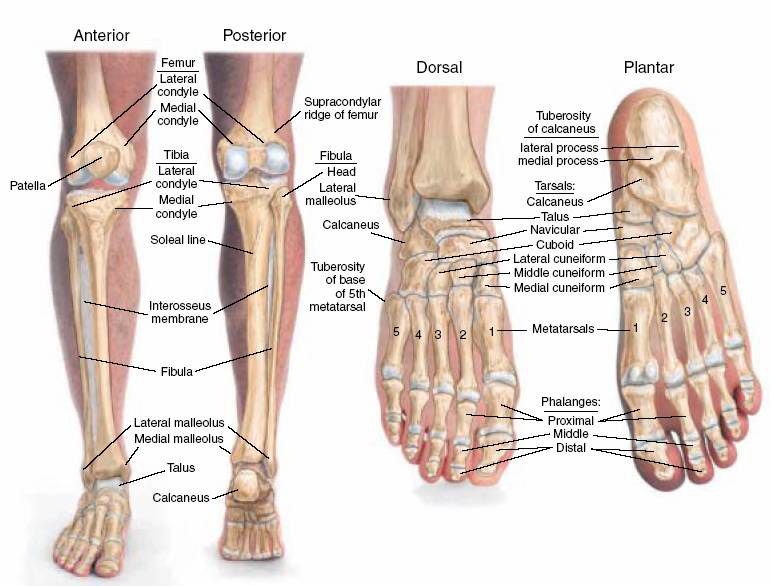
Structure of skeleton of the foot, Tarsals, Metatarsals and Phalanges
The foot has three arches: two longitudinal (medial and lateral) arches and one anterior transverse arch (Fig. 1). They are formed by the tarsal and metatarsal bones, and supported by ligaments and tendons in the foot.